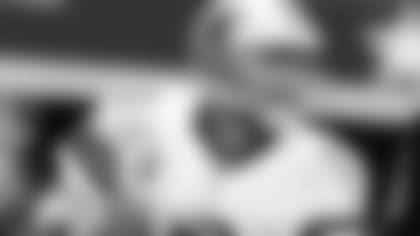IRVING, Texas – Like it or not, from the magnificent highs to the overwhelming lows, Tony Romo will be the quarterback of this team for the foreseeable future.
After all, the Cowboys had no choice but to find a way to extend Romo.
The six-year, $108 million extension with $55 million guaranteed seems exorbitant at first glance, but it's the going price for a player of Romo's caliber and talent. The problem isn't so much the deal; it's the fact that the team had no other viable decision.
Romo went undrafted in 2003 before finding his way onto the Cowboys' roster as a free agent. Since then, the Cowboys have drafted just one quarterback. The failed experiment, a 2009 fourth-round selection on Texas A&M's Stephen McGee, marked the only time the Cowboys picked a quarterback in the draft since 2001, when they snagged Quincy Carter in the second round.
Go back to 1991, when the Cowboys used a fourth-round pick on Bill Musgrave, to find the last time the team drafted a quarterback before Carter.
The Cowboys found a way to turn the undrafted Romo into one of the better starters in the league. Apart from that, few attempts have been made to develop quarterbacks, and the failure to do so meant the Cowboys had to keep Romo in Dallas for what will likely be the rest of his career. That's not to say he didn't deserve an extension, but there was no alternative. They had no backup waiting in the wings.
Letting go of Romo meant potentially going through another carousel of quarterbacks, the same way they did for years in the early 2000s, when Anthony Wright, Randall Cunningham, Ryan Leaf, Clint Stoerner, Chad Hutchinson, Vinny Testaverde, Drew Henson, Drew Bledsoe and Carter all started at least a game.
The Cowboys, logically, weren't going to let that happen by allowing Romo to hit the open market. But eventually here in the next few years, they'll need to learn from their past and devote time to drafting and developing a quarterback to be Romo's successor.
Even the Packers have drafted four quarterbacks since snagging Aaron Rodgers in 2005. One of them, Matt Flynn, could go on to become an NFL starter, even if it's not in Green Bay. The Packers insistence on picking quarterbacks to sit behind a star isn't really an anomaly.
Since taking Tom Brady in the sixth round in 2000, the Patriots have drafted another six quarterbacks. Matt Cassel served as an adequate backup and eventually became a starter in the league. They're prepping Ryan Mallett to be a serviceable backup and potential starter down the road.
These teams could have drafted more apparent needs, rather than selecting multiple backups at quarterback. But the position is too important to risk any chance of what the Cowboys went through already in the early 2000s.
The Cowboys learned how uncomfortable that could be. Unless they can develop more quarterbacks in the next few years, it's possible that could happen again down the road.















